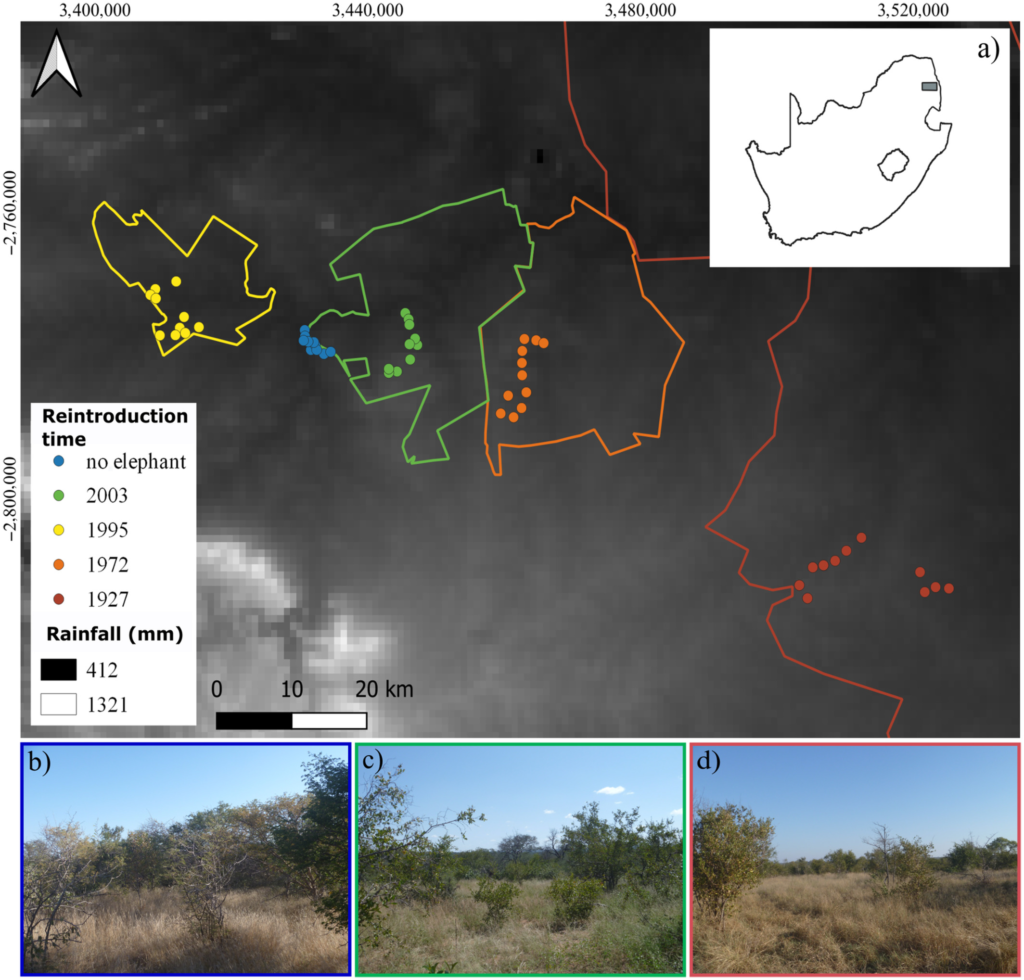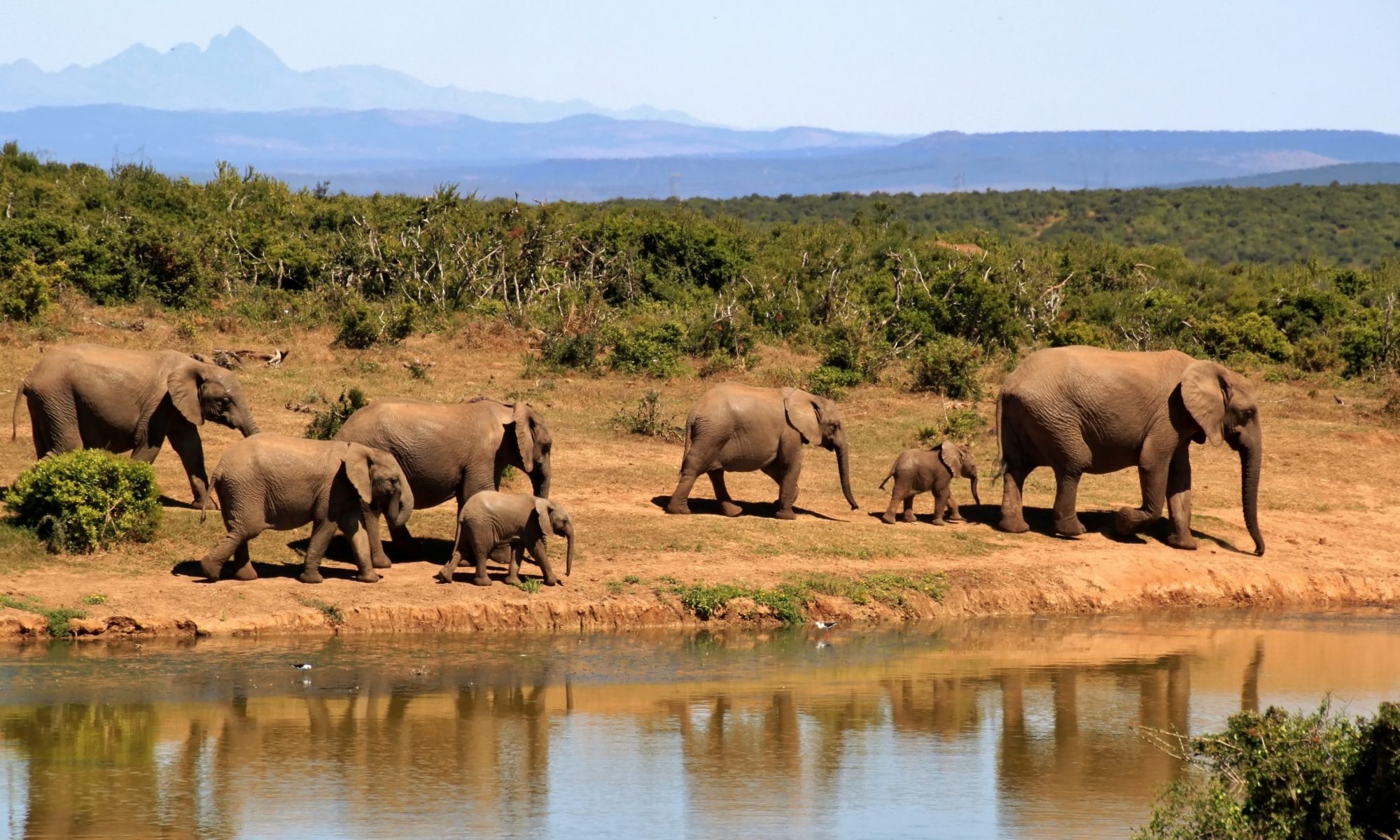Featured Image: African Savannah elephants have been long-renowned for their importance in shaping the land they live on. Copyright: CC BY-SA 4.0, via wikimedia commons.
Paper: Elephant rewilding affects landscape openness and fauna habitat across a 92-year period
Authors: Christopher E. Gordon, Michelle Greve, Michelle Henley, Anka Bedetti, Paul Allin & Jens-Christian Svenning
Elephants have an enormous impact on their surrounding environment, particularly through their impact on the openness of the savannah, earning them a reputation as “ecosystem engineers”. Species like elephants, with important influences on the landscape around them, are being studied in efforts to rewild parts of the planet; restoring ecosystems in ways that they can sustain themselves. A recent paper by Gordon et al. explores elephant rewilding across South Africa and assesses its effect on vegetation and animal species across various nature reserves and time spans dating back to 1927.

The focus of this study, the African savannah elephant, is known for uprooting and destroying trees, while leaving behind debris to promote a more open savannah. Through their nature-appointed engineering role, elephants create habitats for small mammals, moderate fire regimes, and make prey easier to spot for predators, influencing the plant and animal species that can thrive and survive. Extensive habitat destruction and poaching led to severe local declines in their populations, with their losses felt throughout the entire ecosystem.
The research by Gordon et al. assesses ecological changes following the reintroduction of elephants. Three main predictions, based on what we know about elephants and the way they interact with the environment, are explored in the paper. Firstly, trees and woody vegetation cover should be highest without elephants and begin to decline as elephants are present. It is also predicted that as elephant populations increase, the amount, and size, of tree hollows should increase alongside the evidence of tree impacts. Finally, coarse woody debris should decrease due to impact by elephants after their reintroduction.
To test these predicted outcomes, the researchers combined field observations with statistical models to determine the response of each reserve to their respective reintroduction of elephants. They gathered data on the number of tree species, canopy density, and evidence of tree trunk damage or uprooting of vegetation by walking transects and across 50x10m rectangular sections. The statistical models applied aimed to compare reserves with elephants with a control locality where none were present and to highlight how long it took for ecological changes to occur as a response to the reintroduction of elephants.
Their results confirmed that reserves where elephants were reintroduced were associated with a more open overall landscape and only three of the seventeen measured responses remained the same between reserves with and without elephants. Four variables were found to differ significantly, however were not shown to intensify with time as we might expect: the density of two species of small tree, woody plant impact (defined as percentage of plants with trunk or uprooting damage), and abundance of small coarse woody debris. For each of these responses, there appears to be a rapid short-term change following reintroduction that reaches a threshold stable state. There is little difference between reserves where reintroduction times vary between 16 years and 92 years. Overall landscape openness, however, does show a long-term positive trend.
Importantly, Gordon et al. show that some characteristics did not fit with their predictions. For example, tree density, the density of a specific shrub in the mallow family, and medium-sized coarse woody debris were all observed to increase over time. This could be thanks to the role of elephants in dispersing seed throughout the region or their preference for closed environments with more vegetation cover, giving previously open areas a chance for trees to grow over long timescales.
These observations offer valuable insights into the complex dynamics between elephants and their environment. While rewilding is becoming more widespread, it is relatively underfunded, largely due to the long timescales required to see the benefits. Studies that provide long-term analyses are therefore vital in shedding light on the advantages of these programmes and attracting more investment to protect a range of species. They also reinforce an important message about how working with nature benefits other species. Elephants didn’t just evolve in the savannah, they evolved together with the habitat shaping it along the way, providing a valuable lesson in maximising the overall health of an ecosystem.

How Elephants Impact the Savannah of South Africa: A Case Study in Rewilding by Jordan Healey is licensed under a Creative Commons Attribution-ShareAlike 4.0 International License.

